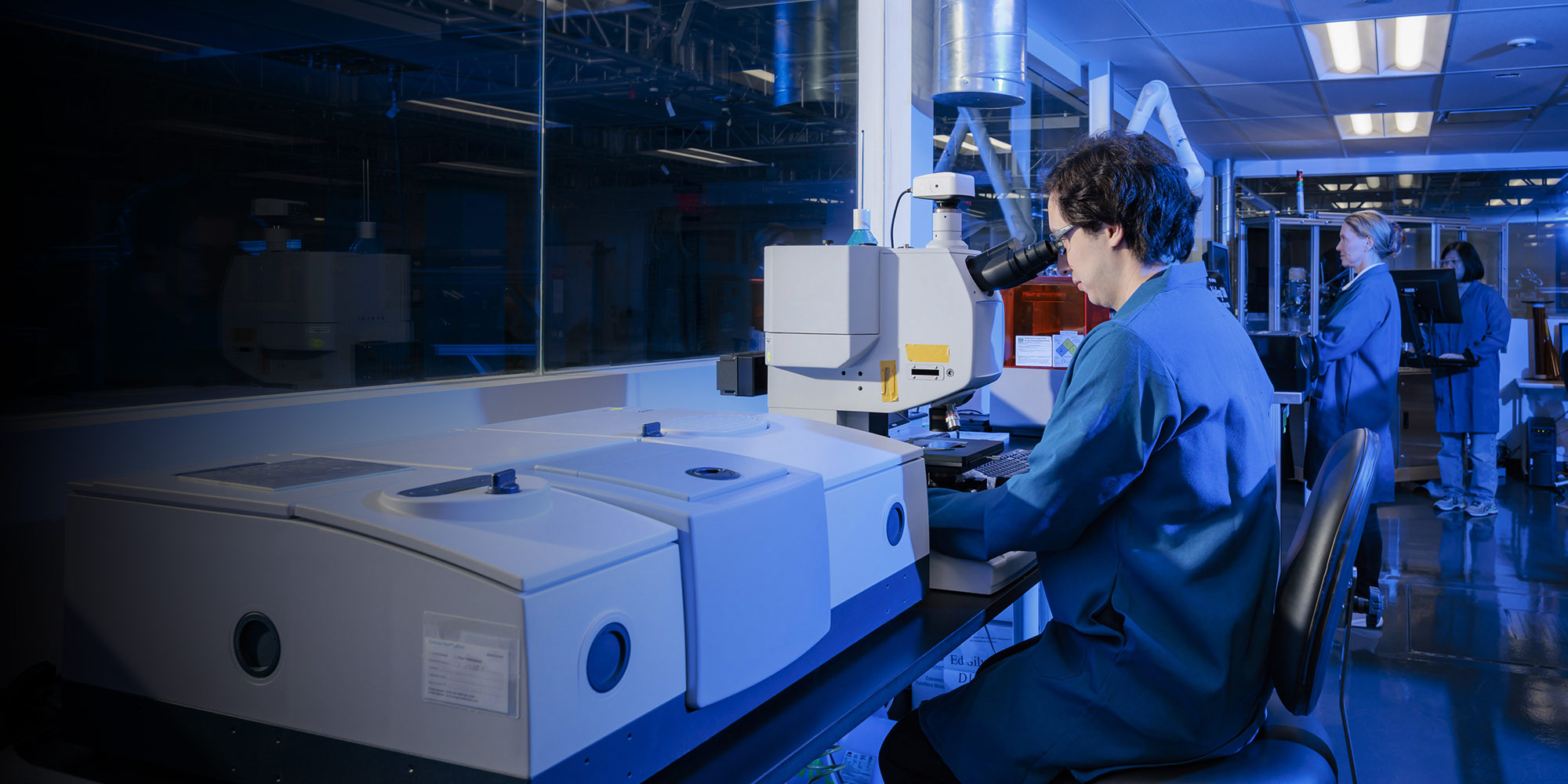Frosty Reflections
Research Labs: Defining Next-Generation Technology

Research Labs: Defining Next-Generation Technology

By Nestor Vences and Erin Cross
For decades, Research Labs at Northrop Grumman’s Space Park campus in Redondo Beach, California, have been at the forefront of innovation and discovery. Powered by researchers in physics, electrical engineering, materials science, optics, and chemical engineering, the Research Labs’ mission is to anticipate the needs of tomorrow, address gaps in capability, and serve as the leading testing ground for new technology and innovation.
“What makes the Research Labs special is the interdisciplinary interactions that can happen in the labs. Our counterparts can say, ‘Here are the challenges,’ and we can walk down the hall and say, ‘Here is what we discovered.’ That’s what makes it all come together,” said Luke Sweatlock, director of Northrop Grumman’s Research Labs.
In collaboration with universities and government, each year, the Research Labs register patents, competitive breakthroughs, and publish papers in major scientific journals such as Nano Letters, Nature and ACS Photonics.
“I can’t believe this is my job,” said Stephanie Liu, a Research Labs principal scientist who joined the company in 2024 after graduating from Northwestern University with a Ph.D in Materials Science and Engineering. “I never thought I could continue doing the kind of research I did as a Ph.D student in my post-graduate career.”
The labs have access to thousands of square feet of research space. In addition to inventing, maturing and characterizing new technologies, the team provides customized testing and rapid prototyping services.
Advanced materials is a subset of the Research Labs’ focus. Many projects create novel complex materials at the microscopic level that are engineered to their end-use applications. The goal of advanced materials is to push beyond the state-of-the-art in terms of strength, durability, flexibility, optical performance, or conductivity.
"Many problems require us to tailor-make such materials to solve them," Luke said.
A great example of this is the Research Labs’ Flexible Reflector for Optical Solar Technology (FROST), which started as an intern project and quickly progressed from idea to flight-ready hardware, said Dr. Austin Howes, advanced materials principal investigator.
FROST is a thin polymer sheet with a specialty coating that is lightweight and incredibly versatile. For a satellite to operate optimally, its temperature must be maintained within a certain range. To mitigate the extreme temperatures, engineers develop intricate thermal management systems. A part of those systems are thermal control mirrors, often called secondary surface mirrors (SSMs).
“The mirrors help regulate the spacecraft temperature by reflecting incoming solar radiation and radiating internal heat,” Austin said. “Mirrors can break during installation or in space and are time consuming and expensive to install.”
FROST addresses thermal requirements in the same way SSMs do but eliminates many of its drawbacks. For example, FROST is flexible and cuttable, allowing large sheets to be applied over curved surfaces and around fasteners.
“Having a first-hand role in maturing better materials is one of the most satisfying elements of the job. This should make our manufacturing more efficient while simultaneously solving technical challenges on-mission,” Austin said.
In April, Northrop Grumman teams collaborated to fly the material, working as a cross-functional team of technicians, subcontract specialists, procurement personnel, and engineers.
The demo went from initial concept to delivered payload in an unprecedented 37 days, and FROST will be put to the test early next year in an on-orbit demo.
“FROST is proof that there's just no limit to what you can do by engineering materials from the ground up," Luke said.
Learn more about Northrop Grumman’s Research Labs.